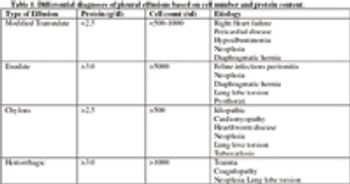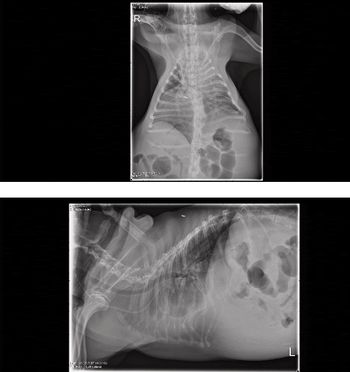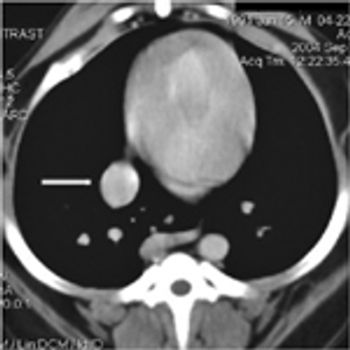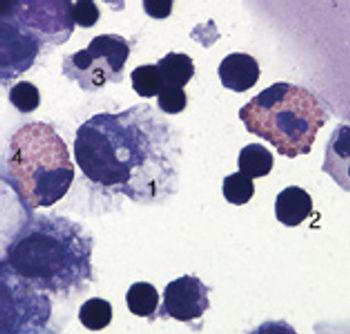
Bronchial obstruction can develop due to inflammatory infiltrates (eosinophils, neutrophils, or macrophages) or hypertrophy of bronchial tissues.

Bronchial obstruction can develop due to inflammatory infiltrates (eosinophils, neutrophils, or macrophages) or hypertrophy of bronchial tissues.

Feline upper respiratory infection is perhaps the most frustrating illness facing shelter veterinarians, managers and staff.

Air within the mediastinum may be the result of spontaneous rupture, trauma, or the result of diagnostic or therapeutic interventions.

Feline herpesvirus is a common pathogen of domestic cats.

Tracheobronchial disease represents a series of problems covering disorders of the upper and lower airways.

Diseases of the parenchymal lung tissue present a unique clinical problem. With impaired gas exchange and hyoxemia rapid diagnosis and treatment is essential.

In spite of the fundamental importance of auscultation to the physical exam, there has been surprisingly little effort made to teach and standardize how the examination is performed, how to interpret results, and how to communicate those results between professionals.

The principles of management of patients with severe lung disease and injury are summarized and the cases depicting the use if these management techniques are presented.

Respiratory distress cats can present a therapeutic dilemma. These small patients can be so severely compromised that diagnostics and treatment can stress them to the point of respiratory and cardiac arrest.

Pulmonary thromboembolism (PTE) is the occlusion of the pulmonary vasculature by products of the coagulation cascade.

The most common causes of chronic nasal discharge include neoplasia, aspergillosis or cryptococcosis, nasal foreign body, rhinitis secondary to dental disease, and idiopathic or inflammatory rhinitis.

It is suspected that mammals generally adopt a respiratory pattern that meets their metabolic needs with the least metabolic energy cost.

Parasites are major causes of respiratory tract disease in the dog and cat. Recent advances in therapy of these diseases have been made providing the practicing veterinarian with a more rational treatment modality.

While trauma by its very nature is a polysystemic disease, pulmonary complications present one of the most common, and life-threatening aspects of trauma triage.

Q: What is the standard of care for cats diagnosed with bronchitis or asthma?

Intervet/Schering-Plough Animal Health (ISPAH) is partnering with equine practitioners and UC Davis to improve the strategies veterinarians use to attack equine respiratory issues-identifying diseases before they spread in order to target specific pathogens with tailor-made vaccines and better biosecurity programs.

Canine Infectious Respiratory Diseases covers the causes, basic structure, transmission, clinical manifestations, treatment, and prevention of the most common viral and bacterial respiratory pathogens. (3 CE credits)

A 13-year-old 35.2-lb (16-kg) neutered male bichon frise was referred to the Veterinary Emergency Clinic in Toronto, Ontario, for evaluation of a caudal thoracic mass that had been identified radiographically by the referring veterinarian.

A BAL should not be performed on a horse with overt respiratory distress, tachycardia or pulmonary hypertension.

In this two-part video, Dr. Matthew Beal discusses minimally invasive tracheal stent placement to treat canine tracheal collapse.

In this two-part video, Dr. Matthew Beal discusses minimally invasive tracheal stent placement to treat canine tracheal collapse.

Nasal problems are a frequent reason for seeking veterinary care. Sneezing that produces a nasal discharge or frank hemorrhage must be evaluated to identify the underlying cause.

The chronic feline snuffler is a frustrating patient to treat.

Dyspneic cats are frequently presented to clinicians as emergencies. Because they are fragile and very easily stressed, it is a good idea to have a planned, rational and quickly implementable strategy for their management.

There is little argument among clinicians that feline upper respiratory disease is perhaps the most common respiratory disorder for which cats are presented.